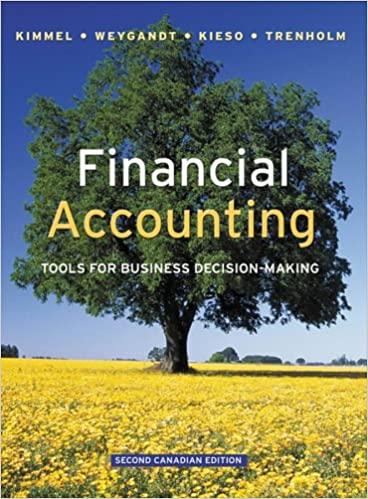Please help me solve Question 2b onwards with steps. Thank you!






1 Sales Budget December January February March Quarter $ 280,000 $ 400,000 $ 600,000 $ 300,000 $ 1,300,000 April $ Sales 200,000 2 Schedule of expected cash collections: Cash sales Credit sales Total cash collections January February March Quarter S 80,000 $ 120,000 $ 60,000 $ 260,000 $ 320,000 $ 480,000 $ 240,000 $ 1,040,000 $ 400,000 $ 600,000 $300,000 S 1,300,000 April S $ $ 40,000 160,000 200,000 3 Schedule of purchases: 120,000 Budgeted cost of goods sold Add desired ending inventory Total needs Less beginning inventory Required purchases December January February March Quarter S 168,000 $ 240,000 $ 360,000 $ 180,000 $ 780,000 $ 60,000 $ 90,000 $ 45,000 $ 30,000 $ 30,000 $ 228,000 $ 330,000 405,000 $ 210,000 $ 810,000 $ 42,000 $ 60,000 $ 90,000 $ 45,000 $ 195,000 $ 186,000 $ 270,000 $ 315,000 $ 165,000 $ 615,000 April $ S $ 120,000 b. Disbursements for purchases February March January Amount Formula Formula December purchases January purchases February purchases March purchases Total cash disbursements for purchases Formula Formula Quarter Amount Formula Formula Formula Formula #VALUE! Formula Formula #VALUE! #VALUE! #VALUE! Schedule of cash disbursements for operating expenses: Salaries and wages Advertising Shipping Other expenses Total cash disbursements for operating expenses January February March Quarter $ 27,000 $ 27,000 $ 27,000 $ 81,000 S 70,000 $ 70,000 $ 70,000 $ 210,000 $ 20,000 $ 30,000 $ 15,000 $ 65,000 $ 12,000 $ 18,000 $ 9,000 $ 39,000 S 129,000 $ 145,000 S 121,000 $ 395,000 5 Cash budget: January Amount Formula #VALUE! February March Formula Formula $ 600,000 Formula #VALUE! Formula Quarter Formula Formula Formula Formula #VALUE! Formula Formula S 129,000 $ 145,000 $ 121,000 $ 395,000 Cash balance, beginning Add cash collections Total cash available Less disbursements: Purchases of inventory Operating expenses Purchases of Equipment Cash dividends Total disbursements Excess (deficiency) of cash Financing: Borrowing Repayments Interest Total effect of financing Cash balance, ending *Input appropriate formulas or given amounts Formula #VALUE! Formula #VALUE! $ 121,000 $ 395,000 Formula Formula Formula Formula Formula Formula Formula Formula Formula Formula 6 Income statement: HILLYARD COMPANY Income Statement For the Quarter Ended March 31 Formula Formula Formula #VALUE! Formula #VALUE! Formula Sales Less cost of goods sold: Beginning inventory (given) Add purchases (Part 3) Goods available for sale Ending inventory (Part 3) Gross margin Less operating expenses: Salaries and wages (Part 4) Advertising (Part 4) Shipping (Part 4) Depreciation Other expenses (Part 4) Net operating income Less interest expense (Part 5) Net income $ 81,000 $ 210,000 $ 65,000 Fomula $ 39,000 Formula Formula Formula Formula 7 Balance sheet: HILLYARD COMPANY Balance Sheet 31-Mar Assets Current assets: Cash Accounts receivable Inventory Total current assets Buildings and equipment, net Formula Formula Formula #VALUE! Formula Total assets #VALUE! Formula Liabilities and Equity Current liabilities: Accounts payable Stockholders' equity: Capital stock Retained earnings Total liabilities and equity s 500,000 Formula Formula Formula Retained earnings, beginning Add net income Total Deduct cash dividends Retained earnings, ending $ 109,000 Formula #VALUE! #REF! Formula 7 Balance sheet: HILLYARD COMPANY Balance Sheet 31-Mar Assets Current assets: Cash Accounts receivable Inventory Total current assets Buildings and equipment, net Formula Formula Formula #VALUE! Formula Total assets #VALUE! Formula Liabilities and Equity Current liabilities: Accounts payable Stockholders' equity: Capital stock Retained earnings Total liabilities and equity s 500,000 Formula Formula Formula Retained earnings, beginning Add net income Total Deduct cash dividends Retained earnings, ending $ 109,000 Formula #VALUE! #REF! Formula Hillyard Company, an office supplies specialty store, prepares its master budget on a quarterly basis. The following data have been assembled to assist in preparation of the master budget for the first quarter: a. As of December 31 (the end of the prior quarter), the company's general ledger showed the following account balances: Credits Cash Accounts Receivable Inventory Buildings and Equipment (net) Accounts Payable Capital Stack Retained Earnings Debits $ 48,000 224,000 60,000 370,000 $ 93,000 500,000 109,000 $702.000 $ 202.000 b. Actual sales for December and budgeted sales for the next four months are as follows: December (actual January February March April $ 280,000 400,000 600,000 300,000 200,000 d. e. f. 8. Sales are 20% for cash and 80% on credit. All payments on credit sales are collected in the month following sale. The accounts receivable at December 31 are a result of December credit sales. The company's gross profit rate is 40% of sales. Monthly expenses are budgeted as follows: salaries and wages, $27,000 per month: advertising $70,000 per month; shipping, 5% of sales; depreciation, $14,000 per month; other expense, 3% of sales. At the end of each month, inventory is to be on hand equal to 25% of the following month's sales needs, stated at costie cost of goods sold). One-half of a month's inventary purchases is paid for in the month of purchase; the other half is paid for in the following month. During February, the company will purchase a new copy machine for $1,700 cash. During March, other equipment will be purchased for cash at a cost of $84,500. During January, the company will declare and pay $45,000 in cash dividends. The company must maintain a minimum cash balance of $30,000. An open line of credit is available at a local bank for any borrowing that may be needed during the quarter. All borrowing is done at the beginning of a month, and all repayments are made at the end of a month. Borrowings and repayments of principal must be in multiples of $1,000. Interest is paid only at the time of payment of principal. The annual interest rate is 12%. (Figure interest on whole months, e-g., 1/12, 2/12). . i. j












